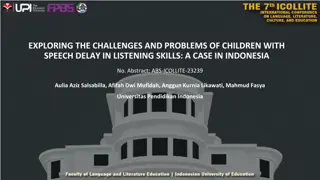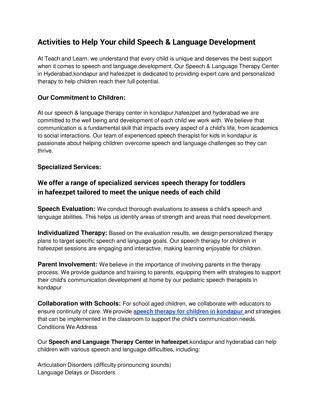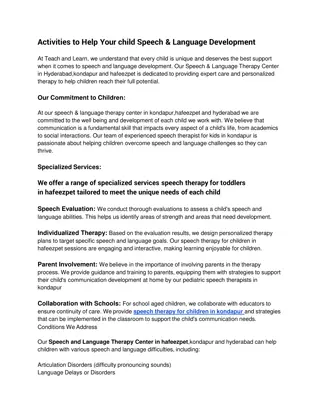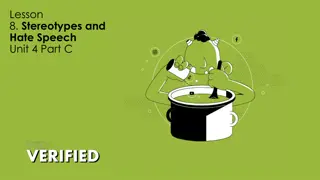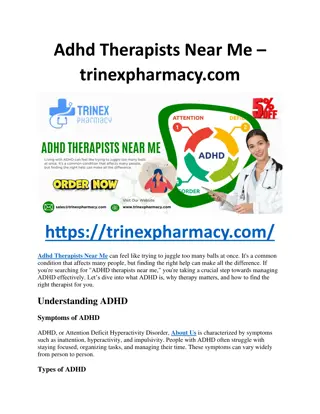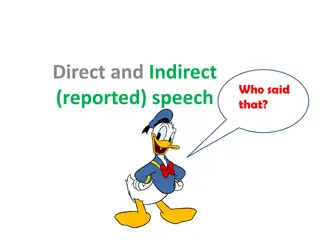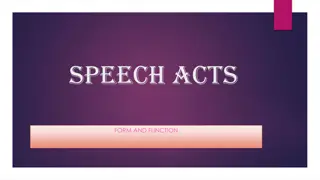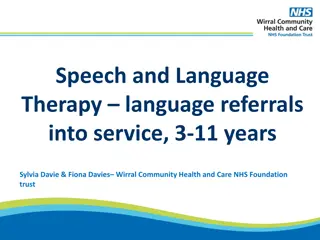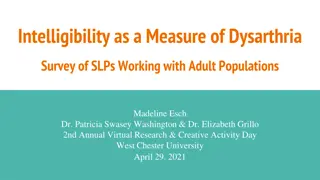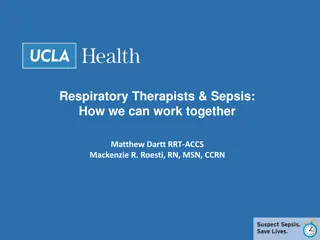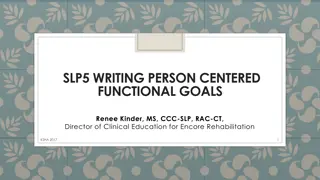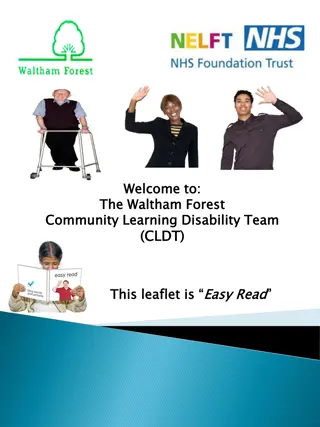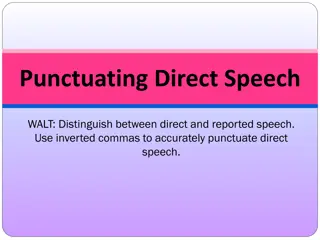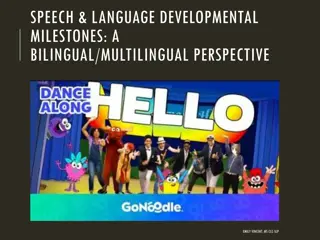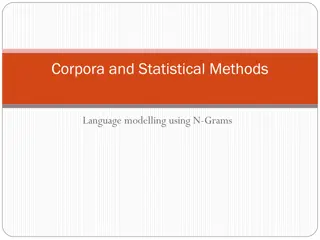WHO ARE SPEECH AND LANGUAGE THERAPISTS?
In this discourse, the roles and identities of speech and language therapists are delved into, highlighting the multiplicity and fluidity of their professional personas. The intricate process of constructing identities, influenced by narratives and cultural factors, is examined, emphasizing the impact on therapeutic interactions.
Download Presentation

Please find below an Image/Link to download the presentation.
The content on the website is provided AS IS for your information and personal use only. It may not be sold, licensed, or shared on other websites without obtaining consent from the author.If you encounter any issues during the download, it is possible that the publisher has removed the file from their server.
You are allowed to download the files provided on this website for personal or commercial use, subject to the condition that they are used lawfully. All files are the property of their respective owners.
The content on the website is provided AS IS for your information and personal use only. It may not be sold, licensed, or shared on other websites without obtaining consent from the author.
E N D
Presentation Transcript
WHO ARE SPEECH AND LANGUAGE THERAPISTS? Dr Mary O Dwyer
THE AMERICAN SPEECH AND HEARING ASSOCIATION (ASHA) (2007:1) SCOPE OF PRACTICE IN SPEECH LANGUAGE PATHOLOGY DOCUMENT The speech-language pathologist is the professional who engages in clinical services, prevention, advocacy, education, administration, and research in the areas of communication and swallowing across the life span from infancy through geriatrics.
IDENTITY Etymological root refers to sameness but often seen as what makes me unique who I am Medical model/social model Narrative Practice viewed as public and social achievement Co-constructed in the trafficking of stories about our own and each other s lives White (2007, 182)
THE PROCESS OF PROFESSIONAL IDENTITY Individual process but co-constructed Multiple identities Fluid, dynamic Therapeutic exchanges Stories told and interpreted Cultural Influences
Training and Professional Bodies Professional Identities of SLTs Hopes, dreams and ambitions of clients Intentions, hopes and ambitions of SLTs Dominant and normalising discourses
HOW ARE IDENTITIES CONSTRUCTED? O DWYER AND LEAHY (2015) Postmodernist thinking - multiple identities are available to an individual at any given time Narratives play a large role in how we construct and re- construct these identities for ourselves and for others. Narratives are how we make sense of our experiences and this meaning-making in turn leads to a sense of identity. Bruner (1986: 143) explained that narrative structures organise and give meaning to experience . Riessman (2008: 8) states that individuals and groups construct identities through storytelling and that these identities are fluid.
SLT MULTIPLE IDENTITIES* An individual speech and language therapist has multiple identities available to them at any time More aware of some than others and how conscious/aware they are of any identity at a given time varies Intrapersonal and interpersonal factors influence how these identities are negotiated and renegotiated These identities are negotiated in their interaction with the people they see for therapy and their families/carers through clinical interaction clients and clinicians negotiate who they are and the roles they play in the therapy story Simmons-Mackie and Damico (2011:44) If a particular identity gets validated through these interactions, it takes hold and is performed regularly, If not validated, gets renegotiated. *O Dwyer, M. and Leahy, M.M. (2016). There is no cure for this: An exploration of the professional identities of speech and language therapists , Journal of Interactional Research in Communication Disorders, 2, 149-167.
WHO ARE SPEECH AND LANGUAGE THERAPISTS WORKING WITH CHILDREN AND ADULTS WHO STUTTER AND THEIR FAMILIES? POSSIBLE IDENTITIES Mainly women Mainly fluent speakers Mainly generalist Many with not well-thought out rationale for their therapy with children who stutter following a programme Some specialists Implicit focus on fluency for many and for some explicit Some work with parents and teachers Facilitators of change/ stories that fit with hopes, dreams and ambitions May have done continuing education linked to stuttering Some focus on confident, competent communicators Others focus on Speak More Fluently or Stutter More Fluently May have completed some study linked to counselling Many have limited experience of working with stutterers
SCENARIO A hypothetical scenario involving a child, Conor and his parents who go to see SLT, R is n While hypothetical, it is based on a range of real-life experiences of the author It highlights the parents desire that part of SLT professional identity be able to cure SLT resistance of that identity and choice to be an ally to Conor the process of considering available evidence and seeking support from those with more experience in order to negotiate an identity regarding the type of alliance she will offer resistance of normalising discourse regarding fluency
BRIAN AND SANDRA PARENTS OF CONOR AGED 3.4 Conor advanced language development, no concerns re speech errors One day, out of the blue, Conor begins to repeat words and part-words Sandra is surprised, then worried and .she reacts Brian remembers his mother saying that one of his brothers had difficulty with speech but grew out of it Conor continues to repeat, begins to prolong sounds and sometimes no sound comes out when he tries to say a word Sandra and Brian decide its time to go to a speech and language therapist and they meet R is n ? Their story about Conor about their role - about R is n and her role their expectations
RISN R is n is 25 has been working in same job since 21 first class honours manager affirms her excellence - more complex cases wider range Anne, specialist in stuttering/fluency disorders is on maternity leave so case is assigned to R is n R is n consults the evidence Fluency shaping approach with lots of evidence Has notes from in-service Anne gave decides to go with indirect approach and start with education but assessment first including taking case history However, Sandra ..(and Brian) want stuttering gone as soon as possible - yes parent sessions are fine but when is she going to see Conor and fix his speech?
CONOR Conor loves fun he likes lots of things, running, painting, lego, and he has lots to say He has noticed that some words seem to have a mind of their own recently and it s like they get stuck Mom and Dad have said nothing - he has noticed they go very quiet and just look at him One day last week, Granny Annie was minding him in the car and he was talking to her when a word was getting stuck She told him to slow down, take a deep breath and start again He could not see her face, but she sounded a bit different Note to self try to not let words get stuck!
ASSESSMENT DAY FOR CONOR Went to lovely place with loads of toys and met R is n who played with me and talked to Mon and Dad She made a video of me Mom does that sometimes too I wonder why? Not sure why I am here but R is n has the best Lego and I am making an amazing bridge
RISNS DILEMMA Wants to help - who? Conor? but parents want fluency Her continuing education related to stuttering, while limited, has her thinking that focusing on fluency might not be best choice She takes her dilemma to supervision She googles and finds Stuttertalk She contacts the SIG/CEN She decides that she needs to talk with parents about some of the difficulties she sees with focusing on fluency
WHO IS RISN WORKING WITH CHILDREN AND ADULTS WHO STUTTER AND THEIR FAMILIES? Mainly women Mainly fluent speakers Mainly generalist Some specialists Many with not well-thought out rationale for their therapy with young children who stutter - following a programme Implicit focus on fluency for many and for some explicit Some work with parents and teachers Facilitators of change/ stories that fit with hopes, dreams and ambitions May have done continuing education linked to stuttering May have completed some study linked to counselling Some focus on confident, competent communicators Others focus on Speak More Fluently or Stutter More Fluently Many have little experience
WHO AM I WORKING WITH CHILDREN AND ADULTS WHO STUTTER AND THEIR FAMILIES? Mainly women Mainly fluent speakers Mainly generalist Some specialists Many with not well-thought out rationale for their therapy Implicit focus on fluency for many and for some explicit Some work with parents and teachers Facilitators of change/ stories that fit with hopes, dreams and ambitions May have done continued education related to stuttering May have done training linked to counselling Some focus on confident, competent communicators Many have little experience of working with stutterers
MY DILEMMA? How best to support speech and language therapists who are working with children and adults who stutter so that they work as allies in the context of evidence which shows that stuttering therapy has an overall positive effect. No one treatment approach for stuttering demonstrates significantly greater effects over another treatment approach. Herder, Howard, Nye, & Vanryckeghem (2006). Need to validate professional identities that support learning from people who stutter therapy which focuses on positive outcomes in terms of children and adults living the lives they want to live and the development of therapy that focuses on education and resistance to normalising discourses resists focus on fluency and cure in therapy focus on confidence, fun and delight in finding and validating identities which fit with our dreams, hopes and ambitions
REFERENCES American Speech-Language-Hearing Association (2007). Scope of Practice in SpeechLanguage Pathology. Bruner, J. (1986). Actual Minds, Possible Worlds. Cambridge, MA: Harvard University Press. Riessman, C. (2008). Narrative Methods for the Human Sciences. London: Sage Simmons-Mackie, N. and Damico, J. (2011). Exploring clinical interaction in speech-language therapy: Narrative, discourse and relationships. In R. Fourie (Ed.) Therapeutic Processes for Communication Disorders: A Guide for Clinicians and Students, 35 52. London: Psychology Press. White, M. (2007). Maps of Narrative Practice. New York: W. W. Norton
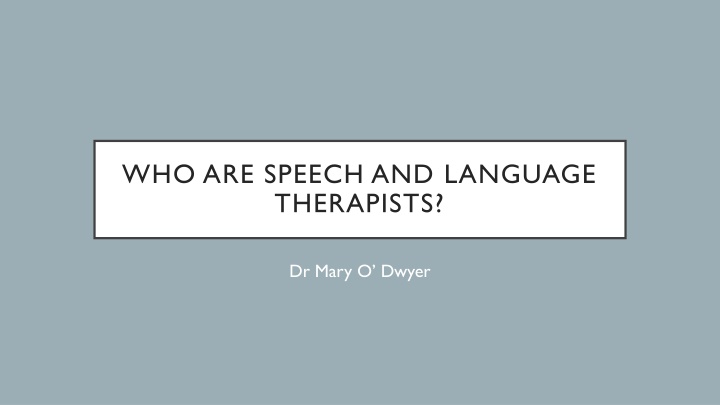

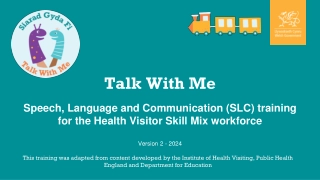
![Prevention and Combating of Hate Crimes and Hate Speech Bill [B.9B.2018]](/thumb/60513/prevention-and-combating-of-hate-crimes-and-hate-speech-bill-b-9b-2018.jpg)
